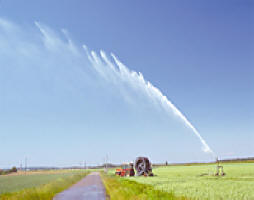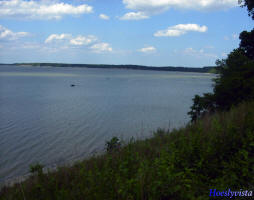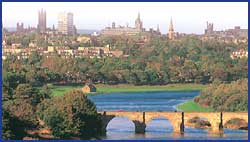 Putting a price on water quality
Putting a price on water quality
One way to clean-up water pollution is to award 'credits' to facilities that
reduce their emissions. These credits can then be traded with other
facilities to compensate for pollution outputs. This controls overall
pollutions levels, while creating an economic incentive to reduce emissions.
Research using models that simulate water quality has been used to establish
the value of these credits and analyse how the price of credits might change
under various conditions, such as the seasonal changes in a river’s ability
to deal with pollutants.
Water pollution arises from fertilisers, industrial chemicals, animal
wastes, human sewage and pesticides. Population growth and economic
development place increasing demands on the environment and make it
necessary to develop programmes to maintain water quality standards. The
total maximum daily load (TMDL) is one approach used to control water
pollution. This approach takes into account the entire watershed, the region
from which water drains into streams, rivers, lakes, and reservoirs and is
often referred to as a drainage basin. TMDL accounts for 'point source' (PS)
pollution, such as sewage pipes, as well as more difficult to measure
'non-point source' (NPS) pollution such as pollution caused by soil erosion
and pesticide runoff. The TMDL is the sum of PS, NPS and background
pollution. It also includes an added margin of safety.
Under TMDL programmes, facilities are given discharge permits, which
regulate the amount of pollution that ends up in water. It is then possible
to organise trading schemes where facilities are awarded credits for
reducing pollution below their permitted allowance. These credits can be
traded with other facilities. This helps prevent pollution levels from
rising and creates an economic incentive to reduce pollution.
Potential trading schemes between point source polluters were evaluated
using the Kao-Ping river basin in Taiwan as a case-study. Values, or 'shadow
prices', were assigned using the QUAL2E1 water quality simulation model.
This model incorporates two water quality indicators, biological oxygen
demand measurements and ammonia-nitrate levels. The researchers developed a
pricing framework for trading schemes and showed that prices for credits
should change in response to the river's changing ability to accommodate
pollutants, since factors such as the river's flow-rate during the wet and
dry seasons affect the ability of the river to accommodate pollution.
This study provides a pricing framework for decision-makers that will help
in the development of strategies for water quality management. However,
trading schemes can be complex to set up with factors such as the number of
facilities involved in the scheme and the variety of the pollutants
discharged influencing the complexity. Success depends upon achieving a
balance between the environmental benefits of improving water quality and
administration costs.
In Europe the drive to improve water quality under the EU Water Framework
Directive (WFD)2 encourages European citizens to get involved in improving
water quality. Following recommendations from the IPCC3, the WFD aims to
prevent and control emissions into water. Implementation of trading schemes
could contribute to these goals.
1. QUAL2E (now know as QUAL2K or Q2K) is a river and stream water quality
model. (http://www.epa.gov/athens/wwqtsc/html/qual2k.html), developed by the
US-environment protection agency (http://www.epa.gov/)
2. The EU Water Framework Directive, a community action plan in the field of
water quality, established 23rd October, 2000.
(http://ec.europa.eu/environment/water/water-framework/index_en.html), it
aims to meet all of its environmental objectives by 2015.
3. IPCC-International Panel on Climate Change http://www.ipcc.ch/
Source: Shu-Kuang Ning and Ni-Bin Chang (2007). Watershed-based point
sources permitting strategy and dynamic permit-trading analysis. Journal of
Environmental Management 84: 427-446.
| Contact information |
Email: nchang@mail.ucf.edu |
|---|---|
| News type | Inbrief |
| File link | n/a |
| Source of information | The US-environment protection agency |
| Keyword(s) | EU-WFD |
| Subject(s) | PREVENTION AND NUISANCES POLLUTION , WATER QUALITY |
| Relation | http://www.semide.org/topics/watmon |
| Geographical coverage | International |
| News date | 21/02/2008 |
| Working language(s) | ENGLISH |
 you are not logged in
you are not logged in





